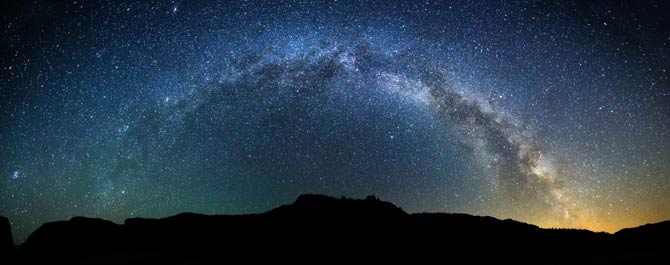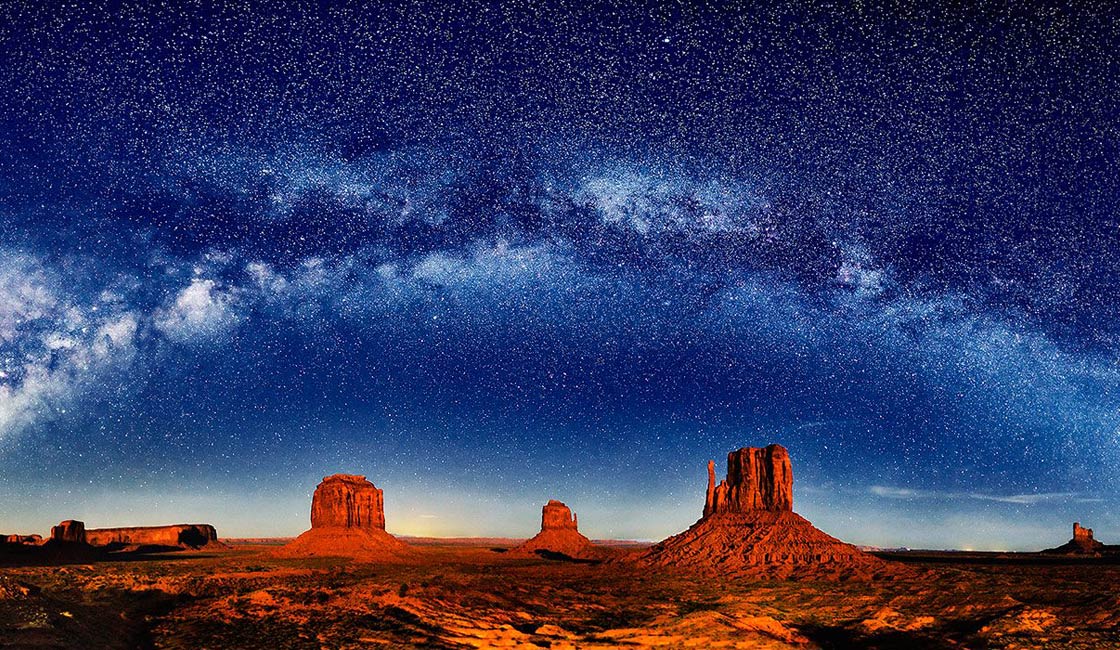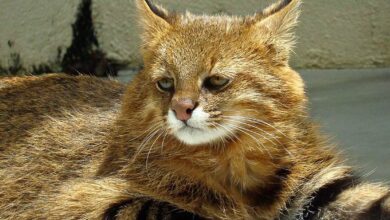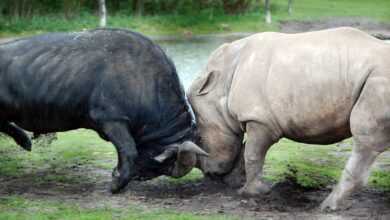Dark-sky preserve (DSP)
It is estimated that 67% of the population of EU countries and as much as 80% of the population of the United States and Japan live in areas where the night sky is never darker than the full moon and star observation is impossible. Do people living in developed countries have a chance to see stars not overshadowed by artificial light? Of course – all they have to do is go to the dark sky reserve.
The dark sky reserve is an area that has been designated to protect a unique environment from pollution by artificial light. Such facilities began to be built primarily to protect nature and to limit light sources near astronomical observatories, but ultimately it turned out to be of great educational value. These places offer conditions unparalleled anywhere else for astronomical observations. This is the main purpose of their existence to this day.
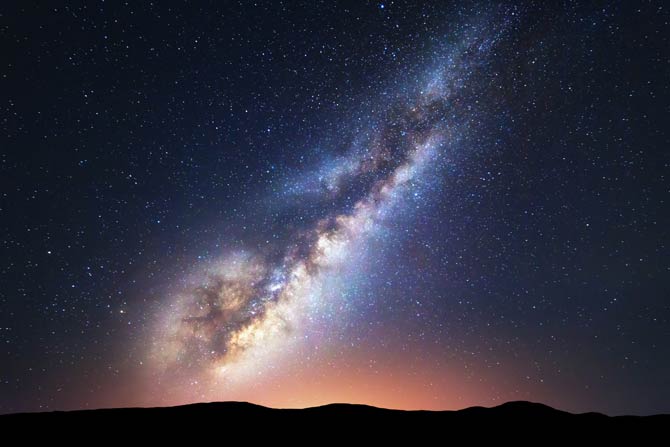
Light pollution
The term “pollution” is usually associated with piles of rubbish in a landfill, rubbish left in the woods, dirty water and smog. However, naturalists rightly distinguish light pollution as well. After all, “pollution” is not only garbage – it is any situation that negatively affects the state of the natural environment – and this is how artificial light affects organisms.
For hundreds of years of the existence of human civilization, the problem of light pollution did not exist – even large cities were lit very poorly at night, and life in them died out at night, except for holidays or ceremonial events (and even then the light intensity was many times lower than today). Only after the industrial revolution, when the streets of cities began to be illuminated en masse, the situation changed. Over time, as biological sciences have developed, it has turned out that artificial light has a very negative effect on organisms naturally adapted to life at night – and not only.
Artificial light can have a negative effect on plants. For them, the right long time of lighting means time for flowering or winter rest. In many animals, light regulates periods of rest and wakefulness as well as other physiological functions; it also enables orientation and communication with other organisms. Artificial light sources can interfere with these processes in all animals and also in humans. However, it affects nocturnal animals the most.
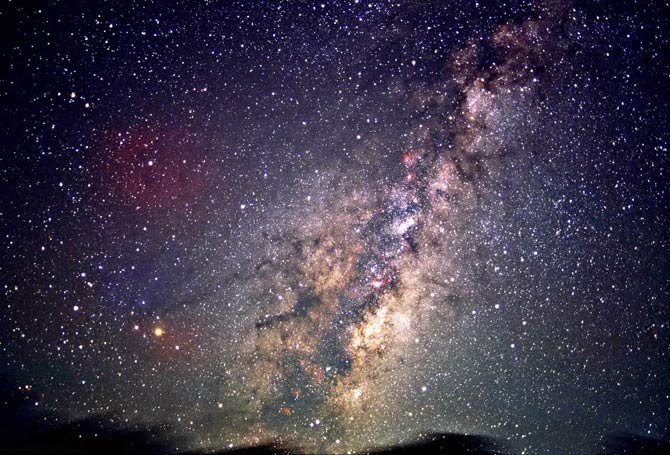
Classification of light pollution
Light pollution is so common that it has been scientifically described and classified. Today, this phenomenon is divided into four groups.
- The first is the glow, i.e. pollution by scattered light (so-called light smog) visible especially over large cities.
- The second type is undesirable light, i.e. light that falls in the wrong places (e.g. bright billboards whose lighting also falls on the road).
- The third group is glare – this is excessive brightness that limits visibility, most often caused by the use of too strong or too many light sources.
- Finally, the fourth group is illumination caused by the accumulation of light sources of considerable power (e.g. lamps illuminating monuments or stadiums).
Today, there are many ways to reduce at least light loss, but any light source in open space affects the visibility of the sky. This phenomenon is also very unfavorable from an economic point of view – any light pollution often means huge energy losses, because the energy produced is not used, but dispersed in the environment.
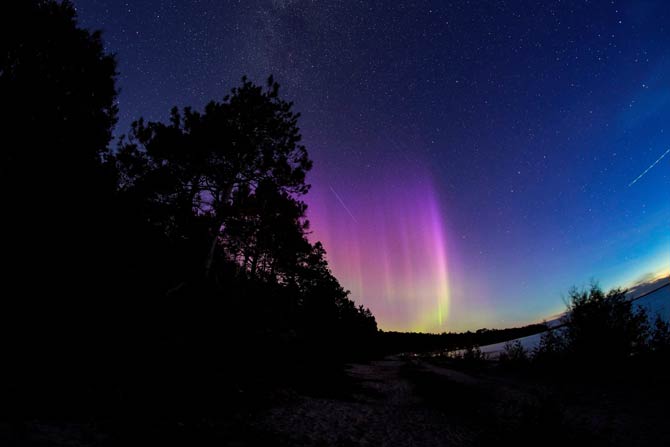
The formation of dark sky reserves
The idea of dark sky reserves was slowly maturing. Already in the mid-twentieth century, the need to preserve areas free from artificial light was noticed where there are astronomical observatories. Later, scientists began to see an opportunity to represent the problem of light pollution with this idea. Initially, the areas where it was advised to avoid artificial lighting only existed unofficially. It was only in the 90s that they began to be put on, on purpose and set boundaries.
Such reserves exist in over a dozen countries, and the largest number of them were established in Canada and the USA. No wonder – there are many large cities in these countries where light pollution is perfectly visible. However, they also have huge spaces at their disposal where this problem is practically non-existent. These are, for example, the deserts of Arizona and Utah and vast forests.
These areas in the US are of particular concern. They are created around reserves and astronomical observatories to protect their conditions, i.e. immaculate darkness. They are founded by various ecological and astronomical organizations. Their activities are coordinated by the International Dark-Sky Association (IDA).

The first dark sky preserves
The world’s first partial dark protection area was a recreational area near Lake Hudson, Michigan, established in 1993. However, according to IDA data, the first reserve set up specifically to protect the dark sky was created in Canada, in the Muskoka region in southern Ontario, where there was an astronomical observatory and previously there were no light sources nearby.
IDA has started helping organizations around the globe create dark sky preserves with the goal of creating a worldwide network of dark sky preserves. Also, as far as possible, they were given specific legal status. The first one created by this organization outside the US was the Mont Mégantic Observatory in Quebec, which in 2007 became the world’s first officially existing dark sky reserve (and therefore an object with the same degree of protection as a traditional reserve). A year later, Natural Bridges National Monument in Utah and its surroundings were declared the world’s first dark sky national preserve.
It is worth adding that in addition to typical dark sky reserve, there are also so-called protection zones around astronomical observatories where the installation of certain light sources is officially prohibited. Usually they are small, but in a dozen or so special cases, they cover a huge area. Most of them are in the US, and the largest in the world is the McDonald Observatory in Texas – it is within 92 km of the observatory.
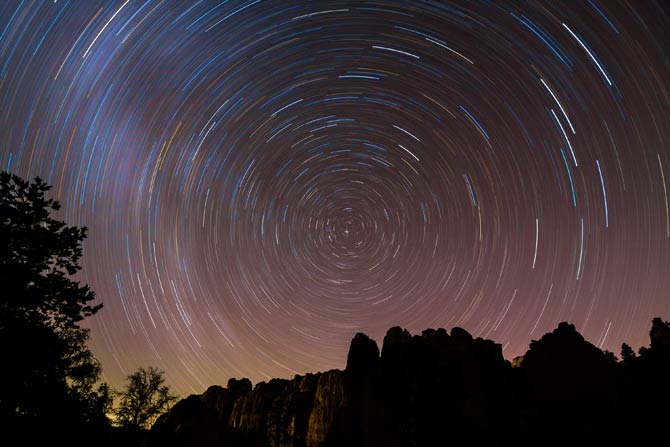
Dark-sky preserves in Poland
Few people in Poland know about this type of facility, which is a pity, because two such areas also exist in Poland (Europe). Moreover, these are places mentioned by the IDA as particularly noteworthy and valuable from an educational point of view.
Izera Dark-Sky Park (Izera Dark-sky preserve) / Polish: Izerski Park Ciemnego Nieba
On the Polish-Czech border, in the Izera Mountains in the Sudetes, in the Lower Silesian Voivodeship in Poland and in the Liberec country in the Czech Republic, there is the Izerski Park of the Dark Sky. It has an area of 7,500 ha. It is the first dark sky preserve not only in Poland, but also in Europe. It is also the world’s first cross-border facility of this type.
This reserve was established on November 4, 2009 as part of the celebration of the International Year of Astronomy. The employees of the Astronomical Institute of the University of Wrocław and the Academy of Sciences of the Czech Republic came up with the idea of establishing the preserve.
The Izera Park has no established legal status – it exists due to an agreement between scientific institutions and local authorities, which fortunately appreciate and support the scientific and tourist importance of the park.
“Bieszczady” Starry-Sky Park (Polish: Park Gwiezdnego Nieba „Bieszczady”)
On March 8, 2013, the “Bieszczady” Star Sky Park was established. It is located in the Podkarpackie Province, in Western Bieszczady. The park covers an area of 113,846 ha. It partially overlaps with the Bieszczady National Park and two landscape parks. It is the second-largest facility of this type in Europe. It also has no legal basis and exists thanks to an agreement between scientific institutions and municipal authorities. From June to October, on every clear night, astronomical shows are organized there, and telescopes are rented.

The importance of dark sky preserves
The knowledge about light pollution and the awareness of this phenomenon is low, which is why the idea of dark sky preserves is considered by scientific institutions as particularly noteworthy. Currently, such facilities perform three main functions.
- First of all, they serve astronomy. They play a twofold role here. On the one hand, they serve to promote astronomy, especially among young people, and on the other hand, they are a buffer area for astronomical observatories – thanks to them, it is possible to study the cosmos with conventional optical devices.
- They are also sanctuaries for nocturnal animals.
- Another task is to popularize knowledge about light pollution and the negative consequences of this phenomenon – both health and financial.
Dark sky preserves are quickly gaining fame and becoming a tourist attraction. It is usually a trip for the persistent, because these places are far from human settlements and more important roads, so getting to them is not always easy, but there are many willing people. Such preserves attract nature lovers who want to observe night animals, as well as astronomy amateurs who find there excellent conditions for observing celestial bodies.
Dark sky preserves are also visited by tourists who want to experience unprecedented experiences as part of their sightseeing tours – and nowadays darkness is such an experience. The inhabitants of the vicinity of such places also benefit from it. For example, near the Jizera Dark Sky Park on the Czech side is the village of Jizerka. There are no external light sources in it, even the streets are unlit, and the residents cover their windows as tightly as possible at night. Thanks to this, people in the village have the opportunity to see the night sky in the way our ancestors saw them 300 years ago.
Even national governments are increasingly interested in protecting the dark, and dark sky reserves are becoming part of national parks and nature reserves. It turns out that darkness is an endangered resource just as much as water or soil, and nocturnal animals are much more likely to become extinct. Therefore, it should be expected that more similar sites will be created in the near future and that their existence may also gain a legal basis.

Interesting facts
- The largest area recognized as a dark sky park in the world is the Wood Buffalo National Park in Canada – it has an area of 44,807 km2 (17,300 sq mi).
- Some Florida beaches are dark sky parks periodically, at the time when sea turtles come ashore to lay their eggs.
- More than 2,000 stars can be seen with the naked eye in dark sky parks in Poland. For comparison – in medium-sized cities, you can see at most 200, and in the largest only 20 stars.
- Like the dark sky parks, a radio silence park was created in the USA in the state of West Virginia, where for scientific reasons (there are radio telescopes nearby), it is not allowed to place and use transmitting and receiving devices.
